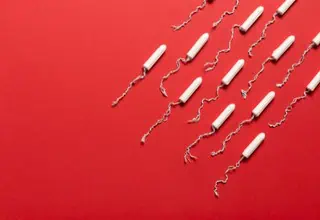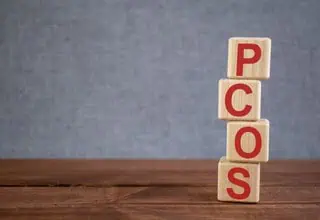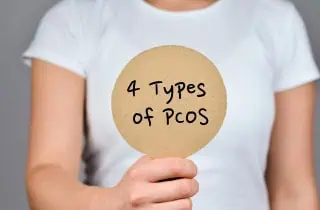Natural Treatment of Heavy Periods

In a normal period, you should not lose more than about 80 mL of menstrual fluid over all the days of the bleed. That’s equivalent to about five tablespoons spread over all the days of the bleed.
In episode two of my podcast/YouTube video, I discuss heavy periods including the role of hormone imbalance, mast cell activation, and insulin resistance; simple period-lightening strategies such as iron, zinc, and a dairy-free diet; and using body-identical progesterone to lighten periods.
What If You Have Both PCOS and Endometriosis?
 PCOS is the hormonal condition of having high androgens or male hormones. Endometriosis is an inflammatory disease that can cause severe pelvic pain. They’re two very different conditions but also both quite common. That’s why it’s possible to have both PCOS and endometriosis at the same time.
PCOS is the hormonal condition of having high androgens or male hormones. Endometriosis is an inflammatory disease that can cause severe pelvic pain. They’re two very different conditions but also both quite common. That’s why it’s possible to have both PCOS and endometriosis at the same time.
Here’s how to differentiate the symptoms of PCOS from the symptoms of endometriosis and where to start if you have both conditions.
PCOS Cannot Be Diagnosed by Ultrasound

Were you told you have polycystic ovary syndrome or PCOS based on a pelvic ultrasound? That may or may not be an accurate diagnosis because PCOS cannot actually be diagnosed or ruled out with ultrasound.
In episode three of my podcast/YouTube video, I discuss PCOS including topics such as: why PCOS is an umbrella term, the difference between polycystic ovaries and ovarian cysts, and why some women with undereating and endometriosis are being mistakenly told they have PCOS.
Immune Treatment for Endometriosis
 Endometriosis is not a hormonal condition. It’s affected by estrogen but is not caused by estrogen or “estrogen dominance.”
Endometriosis is not a hormonal condition. It’s affected by estrogen but is not caused by estrogen or “estrogen dominance.”
Instead, endometriosis is a whole-body inflammatory and immune disease, and possibly a microbial disease.
What does that mean for treatment?
4 Types of PCOS (a Flowchart)

Polycystic ovary syndrome (PCOS) is not one disease. Instead, it’s “a heterogeneous disorder with different underlying biological mechanisms.” In other words, it’s a set of symptoms (androgen excess and anovulatory cycles) caused or driven by several underlying factors. To successfully treat PCOS, you need to identify which factor (or factors) is driving the symptoms. In other words, you need to know your functional type of PCOS.
The four functional types of PCOS include insulin-resistant PCOS, post-pill PCOS (which is temporary), inflammatory PCOS, and the far less common adrenal PCOS.
4 Causes of Androgen Excess in Women

If you suffer hair loss, facial hair (hirsutism), or acne, then you know all about androgen excess or high male hormones.
You may have been given the diagnosis of PCOS, but there are actually several different reasons for androgen excess in women, including androgen hypersensitivity, adrenal androgen excess, high prolactin, menopause, and hormonal birth control with a high androgen index.